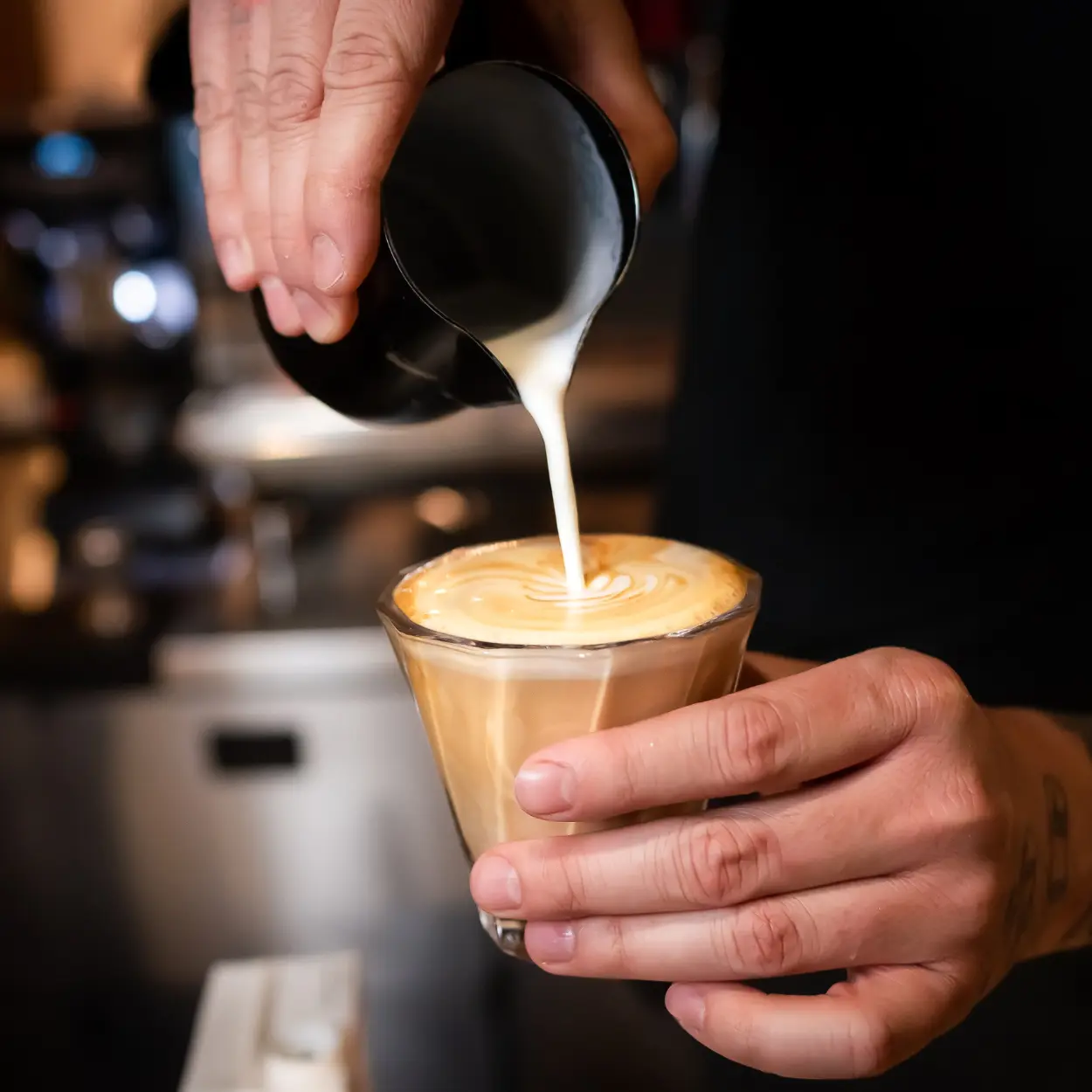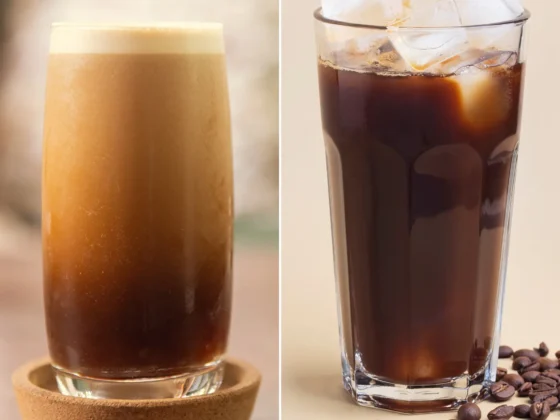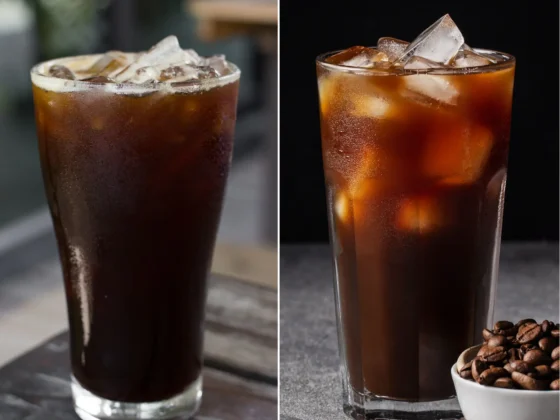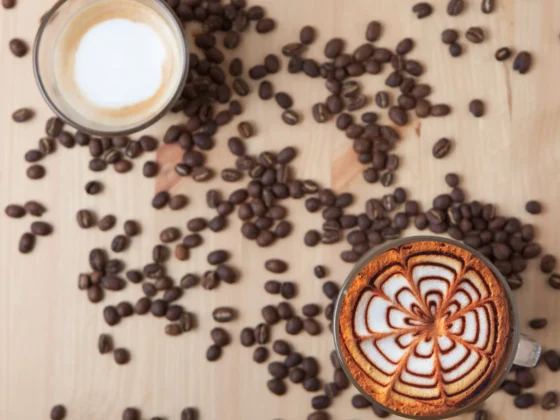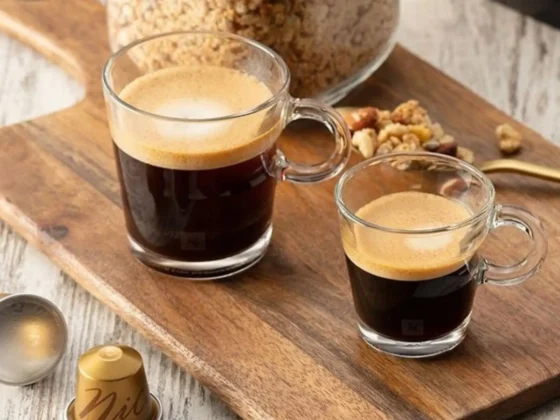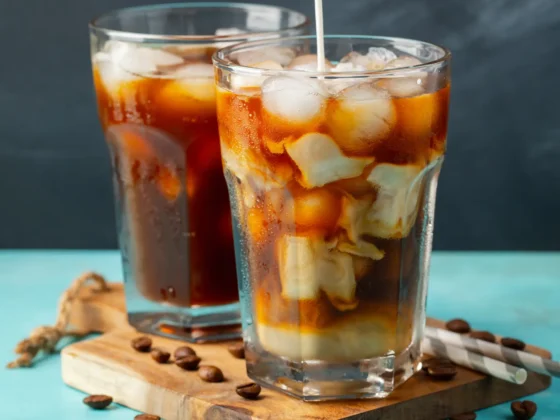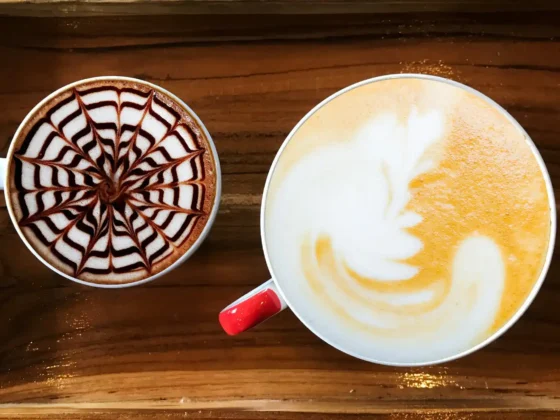In the vibrant world of coffee culture, where every cup tells a story, the flat white emerges as a captivating chapter. “What is a flat white?” — a question that sparks curiosity and conjures images of velvety microfoam swirling gracefully with rich espresso. Beyond the confines of its name, this delectable beverage is a symphony of flavor and technique, a fusion of heritage and innovation that has transcended continents and captivated palates.
This journey explores the origins that birthed this delightful coffee, delves into the nuanced tastes that define it, and uncovers the artistry behind crafting the perfect cup. Join us as we unravel the layers of this beloved beverage, discovering how a simple yet intricate concoction has earned its place in the hearts of coffee enthusiasts worldwide.
Flat White: Key Takeaways
- A Delicate Coffee Symphony: This coffee drink, born from the passionate coffee cultures of Australia and New Zealand, embodies the art of balance and harmony. Its intricate blend of rich espresso and velvety microfoam creates a coffee experience that celebrates both the purity of the coffee bean and the craftsmanship of milk frothing.
- Global Significance and Cultural Adaptations: This beverage’s universal appeal transcends borders, influencing coffee cultures worldwide. From Europe to Canada, this beverage adapts and harmonizes with diverse tastes, reflecting the fusion of its core elements with regional preferences.
- Crafting Latte Artistry: Preparing the perfect cup of this concoction requires mastering various techniques, from steaming milk with precision to pouring patterns that are both visually stunning and flavor-enhancing. Latte art, a hallmark of this lovely beverage, transforms a simple cup of coffee into an artistic masterpiece.
- Nuanced Differences with Coffee Classics: While similar to latte, cappuccino, cortado, and macchiato, the flat white differentiates itself through distinct characteristics. It emphasizes a higher coffee-to-milk ratio, presents a velvety microfoam that integrates seamlessly and provides a unique balance that sets it apart from its coffee counterparts.
- Crafting the Home Experience: For those eager to replicate the café-grade flat white at home, mastering water temperature, calibrating a coffee grinder, and exploring special ingredients are essential. By paying attention to these details, you can elevate your home-brewed cup of this lovely beverage to a level that matches your favorite coffee shop’s creations.
What is a Flat White?

A flat white, often regarded as a refined coffee choice, is a meticulously crafted beverage that combines the richness of espresso with the delicate velvety texture of microfoam, resulting in a harmonious balance between coffee and milk flavors. This delightful concoction, resembling a latte but distinguished by its smaller volume and distinct milk consistency, has gained a devoted following due to its ability to deliver a full-bodied coffee experience. (1)
The Birthplace Debate: Australia or New Zealand?

The intriguing origin of this delectable concoction sparks a friendly debate between two Southern Hemisphere neighbors, Australia and New Zealand, each laying claim to its creation. While its exact inception remains shrouded in mystery, several narratives emerge from both sides:
- Australian Connection: Alan Preston integrated the drink into the regular selection at Moors Espresso Bar in Sydney during the year 1985. According to Preston, he brought this concept to Sydney from his hometown of Queensland. It’s worth noting that cafes in Queensland during the 1960s and 1970s had regularly presented a similar concoction known as “White Coffee – flat”.
- New Zealand Origins: Auckland is the birthplace of a particular assertion in New Zealand, credited to Derek Townsend and Darrell Ahlers from Cafe DKD. This claim introduces an option to the traditional Italian latte. Another New Zealand assertion comes into play in Wellington, stemming from a mishap involving a cappuccino at Bar Bodega on Willis St back in 1989. Craig Miller, renowned for his work “Coffee Houses of Wellington from 1939 to 1979,” maintains that he concocted this very coffee beverage in Auckland during the mid-1980s.
Regardless of its origin, this beverage’s rise to prominence is a testament to its appeal, and captivating coffee enthusiasts far beyond its supposed birthplace.
The Rise in Global Popularity in the 20th Century
The latter half of the 20th century witnessed this coffee drink’s journey from local cafes to international recognition. Its attributes, including a thin layer of velvety microfoam that gives the drink its name, contributed to its allure. The following factors propelled this lovely beverage into the global coffee spotlight:
- Texture and Flavor Balance: The precise technique of creating microfoam that characterizes this drink elevates its texture, allowing the espresso’s nuanced flavors to shine. The marriage of rich coffee undertones and creamy milk creates a unique taste profile.
- Sophistication of Simplicity: Amidst the era of intricate coffee beverages, this drink’s simplicity was a refreshing change. Its minimalist approach, focusing on the art of milk steaming and crema manipulation, struck a chord with coffee purists seeking a refined experience.
- Cultural Crossroads: As coffee culture began to flourish globally, this drink’s unique composition made it a prime candidate for international exploration. Its journey from Australia and New Zealand to cafes across the world solidified its reputation as a beverage deserving of recognition.
In essence, this delectable beverage’s journey from local cafes to international recognition during the latter half of the 20th century symbolizes more than just a coffee trend; it encapsulates the convergence of skillful craftsmanship, elegant simplicity, and the global appreciation for a harmonious coffee experience.
How it Stands Out from Other Coffee Drinks
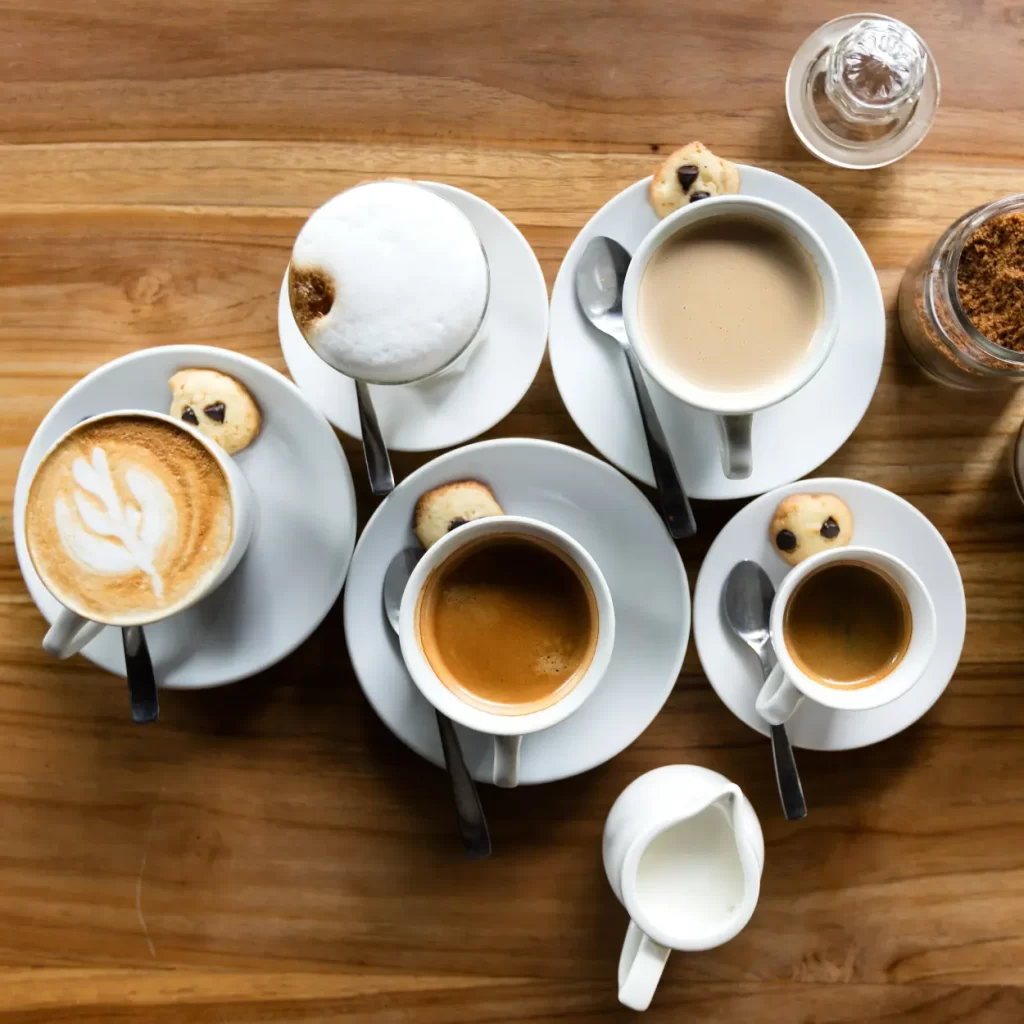
This concoction stands as a distinct entity in the world of coffee, setting itself apart from other popular espresso-based beverages:
- Microfoam Emphasis: The hallmark of this beverage is its delicate microfoam, meticulously steamed to create a velvety texture. Unlike the more voluminous foam of a cappuccino, the microfoam envelops the espresso, enhancing its flavor while maintaining a harmonious balance with the milk.
- Espresso Dominance: While this drink embraces the presence of milk, it is designed to showcase the essence of espresso. The higher coffee-to-milk ratio ensures that the espresso’s robust character remains at the forefront of each sip, delivering a robust yet smooth coffee experience.
- Size and Intimacy: In terms of volume, this beverage sits between an espresso and a latte, providing a more intimate serving size that encourages focused enjoyment. This smaller portion allows for an intense coffee encounter while still indulging in the soothing effects of milk.
This concoction’s journey from its contested origins to global recognition exemplifies its unique appeal. With its meticulous crafting, harmonious flavor balance, and distinct characteristics, this concoction has earned its place as a beloved and sophisticated coffee choice for connoisseurs worldwide.
How to Make A Flat White
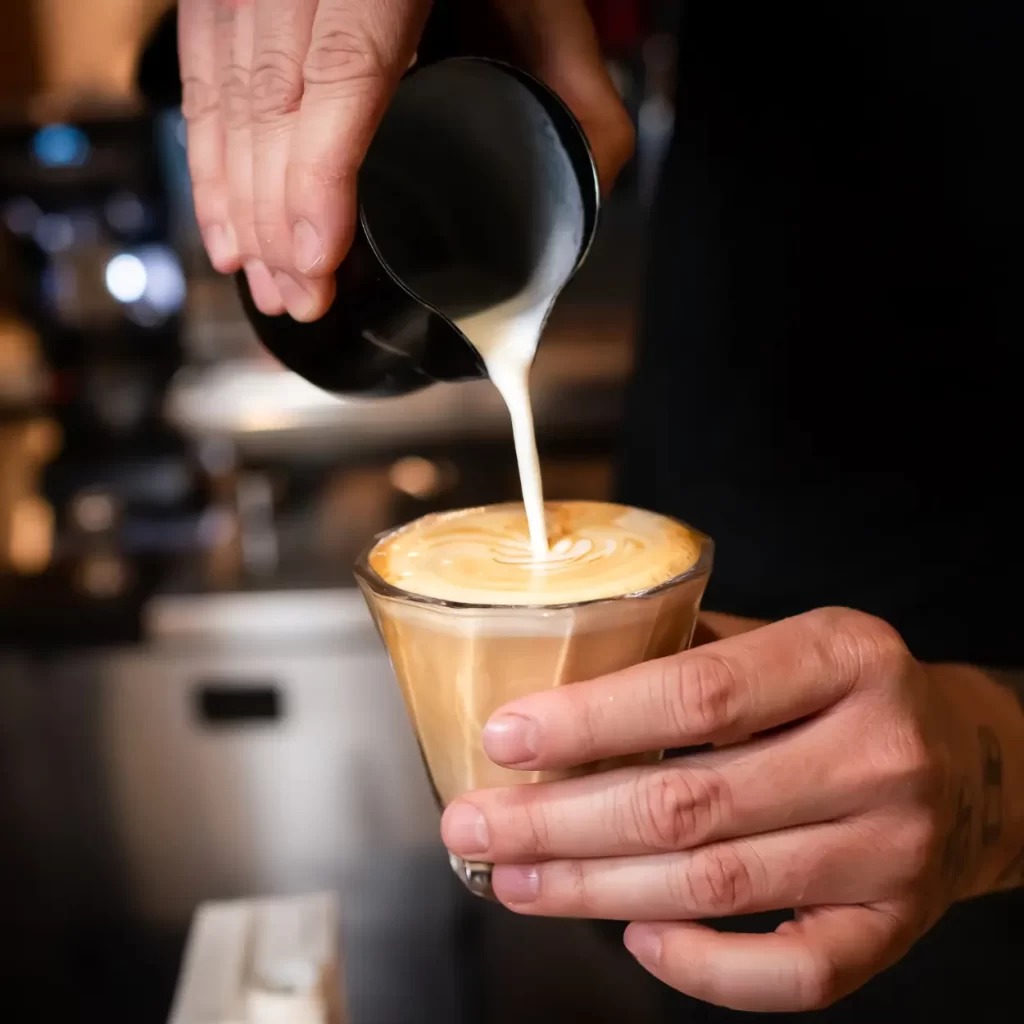
Creating the perfect cup of this coffee drink is a delightful pursuit that combines the finesse of a barista’s skill with the beauty of balanced flavors. This expertly crafted coffee beverage marries the boldness of espresso with the silky touch of steamed milk, resulting in a harmonious and satisfying experience. To achieve this blend of excellence, each step of the process, from selecting the right coffee bean to mastering milk steaming techniques and nailing the perfect proportions, plays a crucial role. Let’s delve into the art of crafting an exceptional cup of joe.
Choosing the Right Coffee Bean and Roast
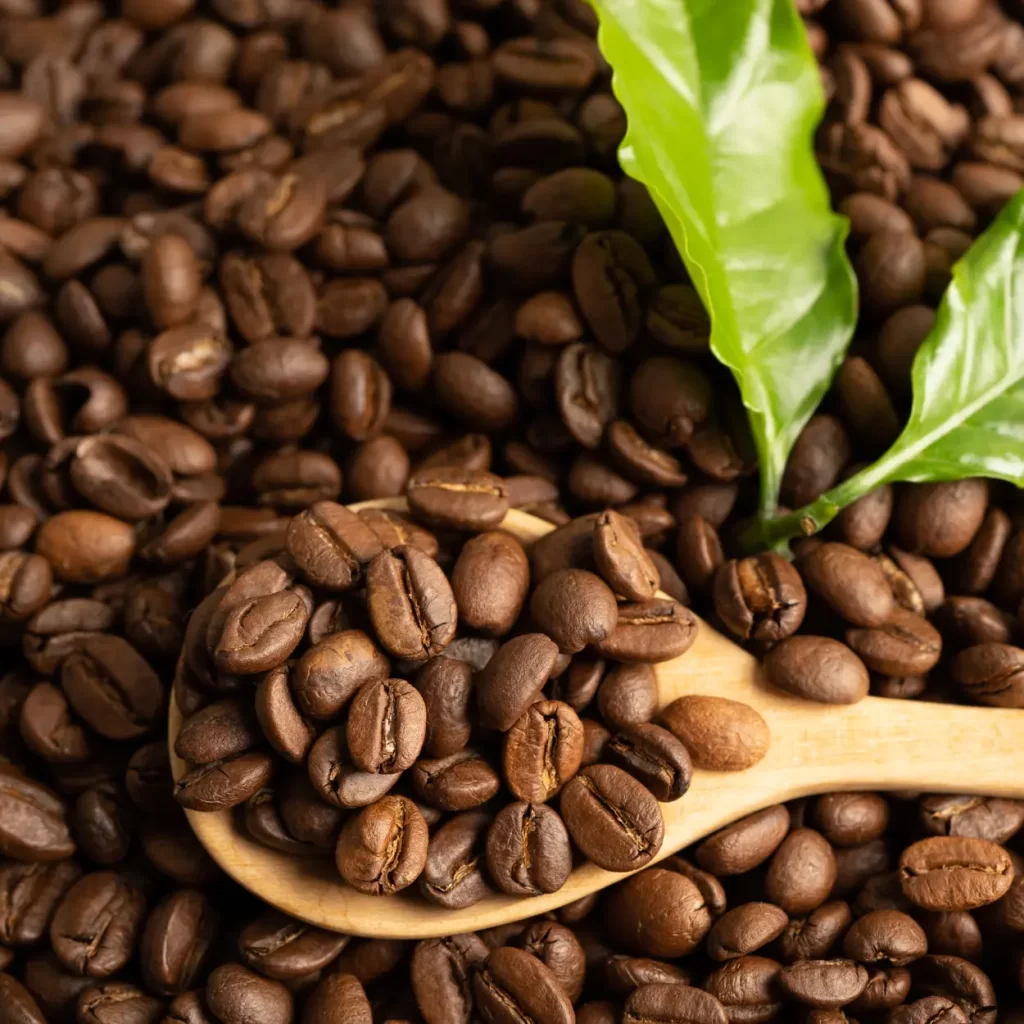
Selecting the right coffee bean and roast is the foundation of a remarkable cup of joe. The nuanced flavors and aromas inherent in the beans will greatly influence the final result. Here’s how to make the right choices:
- Bean Variety: Opt for high-quality coffee beans that exhibit rich, chocolatey, and nutty notes. A balanced blend or a single-origin with these characteristics will complement the milk’s creaminess.
- Roast Profile: A medium to medium-dark roast works best for this lovely beverage. This roast level retains the beans’ natural flavors while also introducing caramelized sweetness, resulting in a harmonious marriage with the milk.
- Grind Consistency: Grind the coffee to a fine consistency, resembling table salt. This ensures proper extraction and allows the espresso to shine through without overpowering the milk.
Careful consideration of the coffee bean and roast lays the groundwork for a beverage that balances espresso’s boldness with milk’s smoothness.
Milk Steaming and Frothing Techniques

The art of milk steaming and frothing is pivotal in achieving the signature texture of this tasty coffee drink. Mastering these techniques enhances the drink’s velvety mouthfeel. Follow these steps for expert milk preparation:
- Milk Selection: Choose whole milk or a high-quality plant-based alternative with a creamy consistency. The fat content contributes to the desired smoothness and texture.
- Milk Jug and Technique: Use a stainless steel milk jug and position the steam wand just below the milk’s surface. Begin with the wand at a slight angle and gradually straighten as the milk expands. Aim to create small, fine bubbles for that coveted microfoam.
- Temperature Control: Steaming milk to around 155-165°F (68-73°C) is ideal. This temperature ensures the milk’s sweetness is accentuated without scalding or overpowering the coffee.
By honing your milk steaming and frothing skills, you elevate this beverage’s texture to achieve the perfect balance between espresso and milk.
Proportions and Ratios for the Ideal Blend
Getting the proportions and ratios right is the final touch in crafting an impeccable cup of this concoction. Precision in measurements guarantees a consistent and delightful experience with every sip. Here’s how to achieve the ideal blend:
- Espresso Extraction: Aim to extract 36ml (36g) of espresso in about 30 seconds. This extraction time optimizes flavor while avoiding bitterness or sourness.
- Milk Volume: For the milk component, use 120ml. This ratio ensures that the espresso’s flavor remains dominant while offering a creamy and balanced mouthfeel.
- Layering Technique: Begin by pouring the espresso into a medium-sized mug. Then, gently pour the steamed milk over the espresso, allowing the microfoam to form a thin layer on top.
Achieving the right proportions and ratios results in a harmonious marriage of espresso and milk that defines the essence of this lovely beverage.
Crafting a cup of this beverage entails an intricate interplay of coffee bean selection, milk preparation, and precise measurements. By embracing these steps, you embark on a journey to create a coffee masterpiece that delivers the exquisite balance of flavors and textures that characterize a truly exceptional cup of this concoction.
Cultural Significance and Variations
The flat white, beyond being a mere coffee beverage, has evolved into a cultural icon with a global presence. Its significance transcends borders, influencing coffee cultures and inspiring local spins that resonate with diverse communities. From its role in contemporary coffee culture to regional adaptations and culinary pairings, this concoction has cemented its place as a beloved and dynamic entity.
Flat White’s Role in Modern Coffee Culture
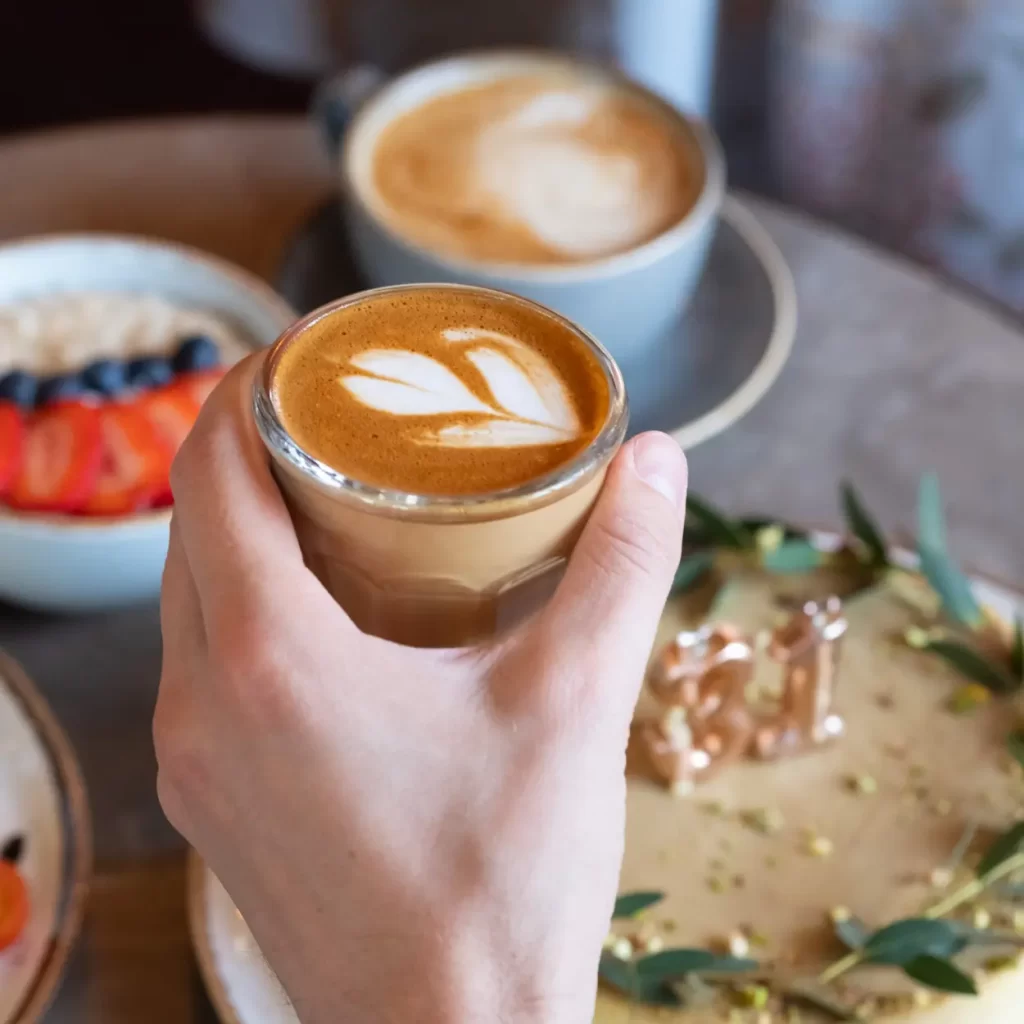
This delectable beverage has firmly established itself as a staple in modern coffee culture, offering a refined alternative to other espresso-based drinks. Its subtle complexity and expertly balanced flavor profile appeal to coffee enthusiasts seeking a more sophisticated experience. This cultural significance is reflected in several ways:
- Craftsmanship Appreciation: This drink’s meticulous preparation, encompassing precise milk steaming and espresso extraction, appeals to a growing segment of coffee connoisseurs who value the artistry behind their cups.
- Minimalistic Elegance: In contrast to the extravagance often associated with contemporary coffee trends, this drink’s unassuming appearance and minimalist composition resonate with those who prioritize the essence of coffee itself.
- Global Accessibility: This beverage’s popularity has led to its inclusion in coffee shop menus worldwide, ensuring that enthusiasts from different corners of the world can savor its unique charms.
This concoction’s presence in modern coffee culture stands as a testament to its refined taste and its ability to cater to those seeking a nuanced coffee experience.
Regional Differences and Local Spins
As this lovely beverage journeyed across continents, it encountered various regional adaptations and local spins that highlighted the coffee-drinking culture of each locale.
Following its successful introduction in Europe, the flat white coffee made its way across the ocean a few years later, finding a new home in the United States. This transition also marked a significant impact on the market, underscoring the American consumers’ openness to embracing emerging trends from the Commonwealth. Canada followed suit, and by 2018, the sales of this delightful beverage had surged by an impressive 81%, serving as a promising indicator of its future trajectory.
When considering the broader perspective, the gradual ascent of the flat white in terms of popularity demonstrates the remarkable adaptability of coffee recipes. It emphasizes the transformative power of even a small adjustment, such as the precise addition of microfoam to the coffee foundation in this instance, showcasing how such nuances can create a world of difference.
This drink’s malleability has allowed it to integrate seamlessly into a multitude of cultures, adapting and evolving while retaining its distinctive character.
Pairing Food with Flat White: From Pastries to Brunch
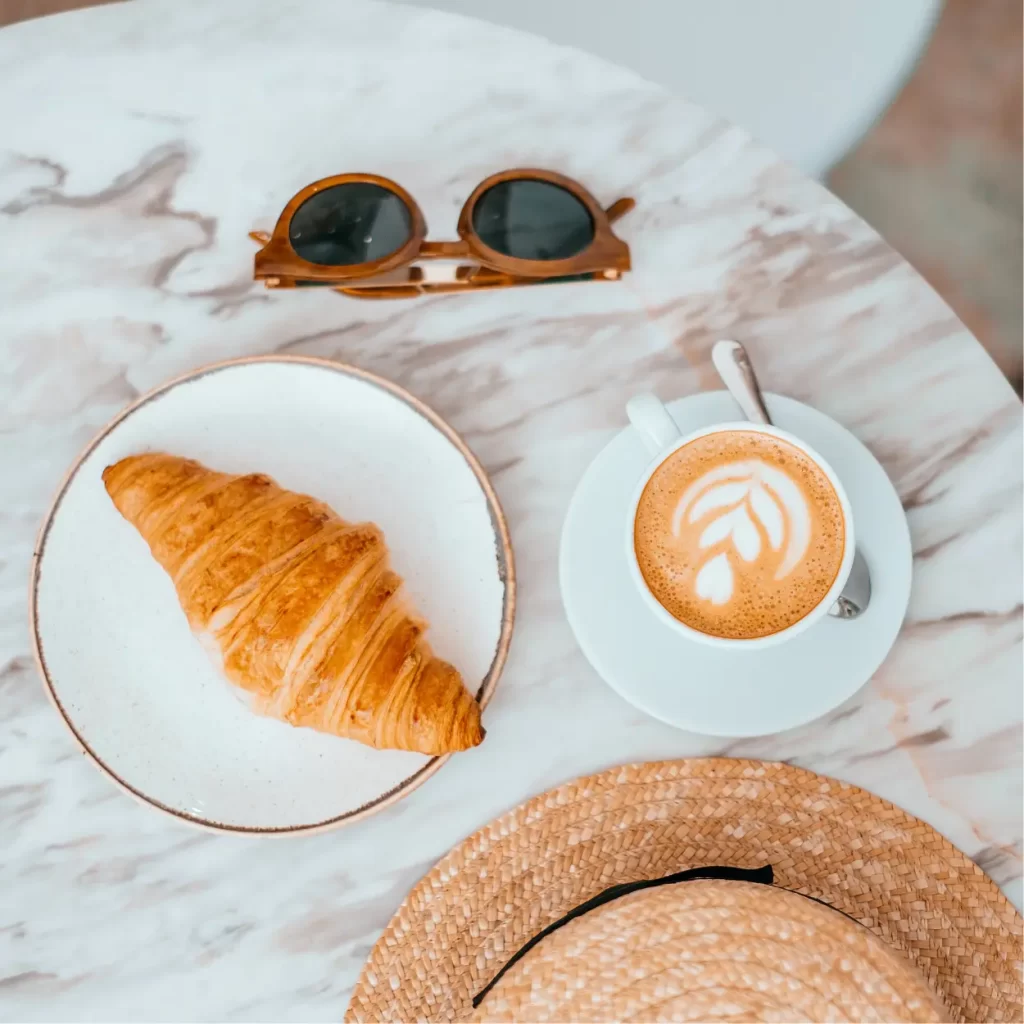
This beverage’s versatility extends beyond its role as a standalone beverage. Its flavor profile and textural balance make it an excellent companion to various culinary delights, leading to delightful pairings:
- Morning Indulgence: When paired with pastries like croissants or danishes, this concoction’s subdued sweetness and rich body provide a harmonious contrast that enhances the overall breakfast experience.
- Brunch Delicacies: This drink’s velvety texture makes it an ideal companion to brunch favorites like avocado toast or eggs Benedict, complementing savory flavors while offering a comforting contrast.
- Afternoon Delights: In the afternoon, this beverage harmonizes with light desserts like macarons or fruit tarts, accentuating their flavors without overwhelming the palate.
Exploring culinary pairings with this beverage showcases its adaptability, enhancing the enjoyment of a wide range of foods while adding an element of sophistication to the dining experience.
The cultural significance of this lovely coffee drink, evident through its role in coffee culture, regional variations, and culinary pairings, underscores its enduring appeal and ability to bridge diverse tastes and preferences. As this beloved beverage continues to evolve and captivate coffee lovers around the world, its influence on cultural experiences and gastronomic enjoyment remains as strong as ever.
Mastering the Latte Art
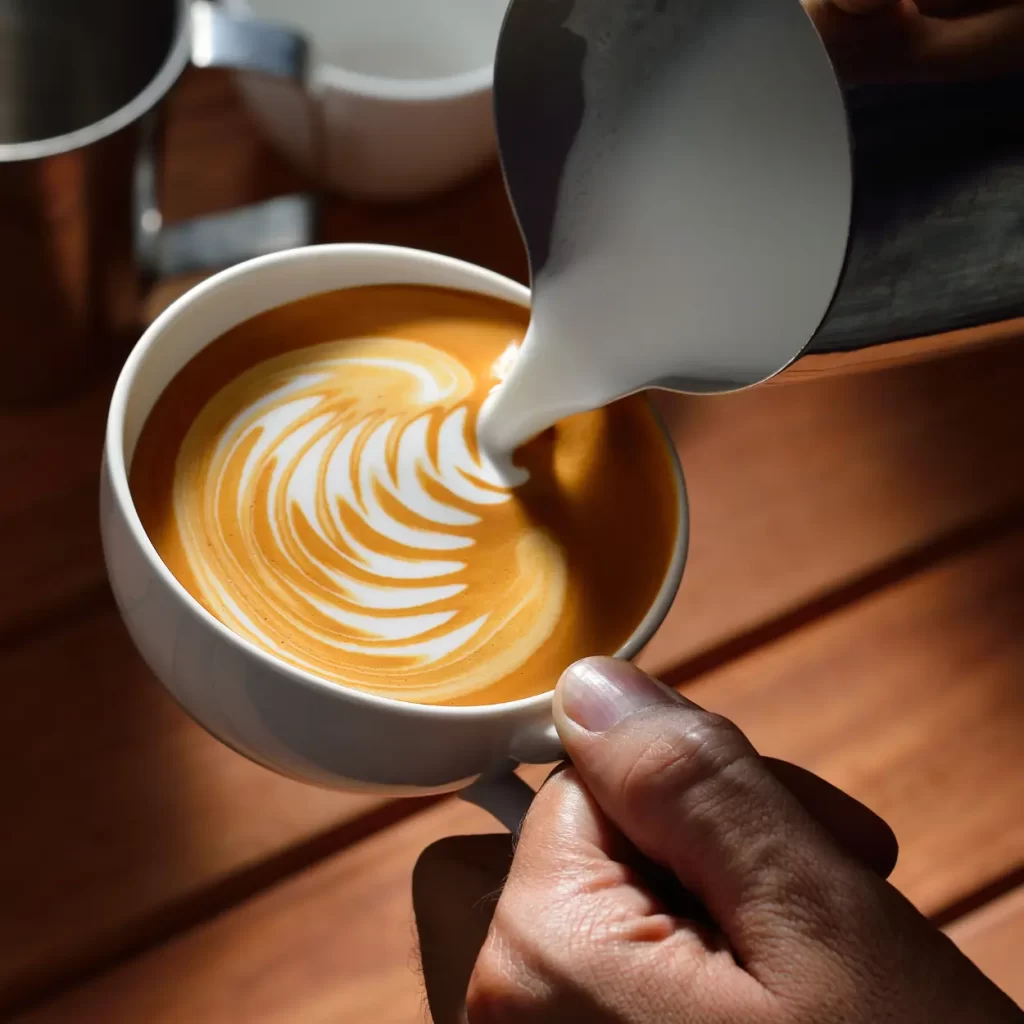
Latte art, a captivating fusion of coffee and visual artistry, has become an integral part of the coffee culture, adding a delightful dimension to the coffee-drinking experience. From mastering the essential tools to perfecting pouring techniques, this guide will take you through the intricacies of creating stunning latte art that pleases both the eye and the palate.
Essential Tools for Latte Art
To embark on your latte art journey, ensure you have the right tools at your disposal:
- Espresso Machine: A powerful espresso machine equipped with a steam wand is essential for achieving the perfect milk foam consistency.
- Milk Pitcher: Opt for a stainless steel milk pitcher with a pointed spout, providing precision control over the milk’s pour.
- Espresso tamper: Use a tamper to evenly distribute and compress coffee grounds for a solid espresso foundation.
- Thermometer: Maintain milk temperature at around 150°F (65°C) for consistent results.
- NanoFoamer (Optional): If you lack an espresso machine, a NanoFoamer can expertly texture milk for your latte art creations.
Equipped with the right tools, you’re poised to delve into the world of latte art with finesse.
Techniques for Creating Beautiful Designs
Creating intricate latte art designs involves mastering milk steaming and pouring techniques:
- Steaming Milk with a Steam Wand: Submerge the steam wand just below the milk’s surface, creating a whirlpool effect as the milk expands. Lower the wand while maintaining the whirlpool motion for a velvety texture.
- Preparing Microfoamed Milk with a NanoFoamer: Utilize the NanoFoamer to aerate and texture pre-heated milk, achieving silky smooth microfoam for your latte art.
- Pouring Techniques: Master free pour and etching techniques. Free pouring involves creating patterns directly as you pour milk into espresso. Etching allows you to draw intricate designs using milk foam.
These techniques form the foundation of crafting visually appealing latte art.
Common Mistakes and How to Avoid Them
Avoid these common pitfalls to ensure your latte art endeavors yield satisfying results:
- Quality Coffee Beans: Begin with high-quality, freshly roasted coffee beans to achieve optimal flavors and textures.
- Proper Milk Texturing: Texture milk to be smooth, creamy, and glossy, with a microfoam that boasts fine velvety bubbles.
- Consistent Temperature: As previously discussed, maintain a consistent milk temperature around 150°F (65°C) to preserve the artful balance of your latte.
- Practice and Persistence: Mastery comes through practice. Dedicate time to perfecting pouring techniques and experimenting with designs.
- Develop Your Style: While learning established designs is important, don’t hesitate to innovate and develop your unique latte art style.
By understanding these mistakes and actively working to avoid them, you’re well on your way to achieving latte art excellence.
Latte art is an enchanting blend of skill, creativity, and precision, elevating the coffee experience to new heights. With essential tools in hand, a grasp of techniques, and an awareness of common pitfalls, you’re now equipped to embark on a journey that merges your passion for coffee with the art of expression. Through dedication and practice, you’ll find yourself creating captivating latte art that delights both your taste buds and your artistic sensibilities.
Flat White vs Other Coffee Drinks
In the intricate world of coffee, each beverage offers a unique flavor profile and texture, catering to diverse preferences. Among the array of options, this drink stands out as a harmonious blend of espresso and velvety microfoam. To better understand its distinct characteristics, let’s explore how this delightful beverage compares to other popular coffee drinks.
Flat White vs Latte
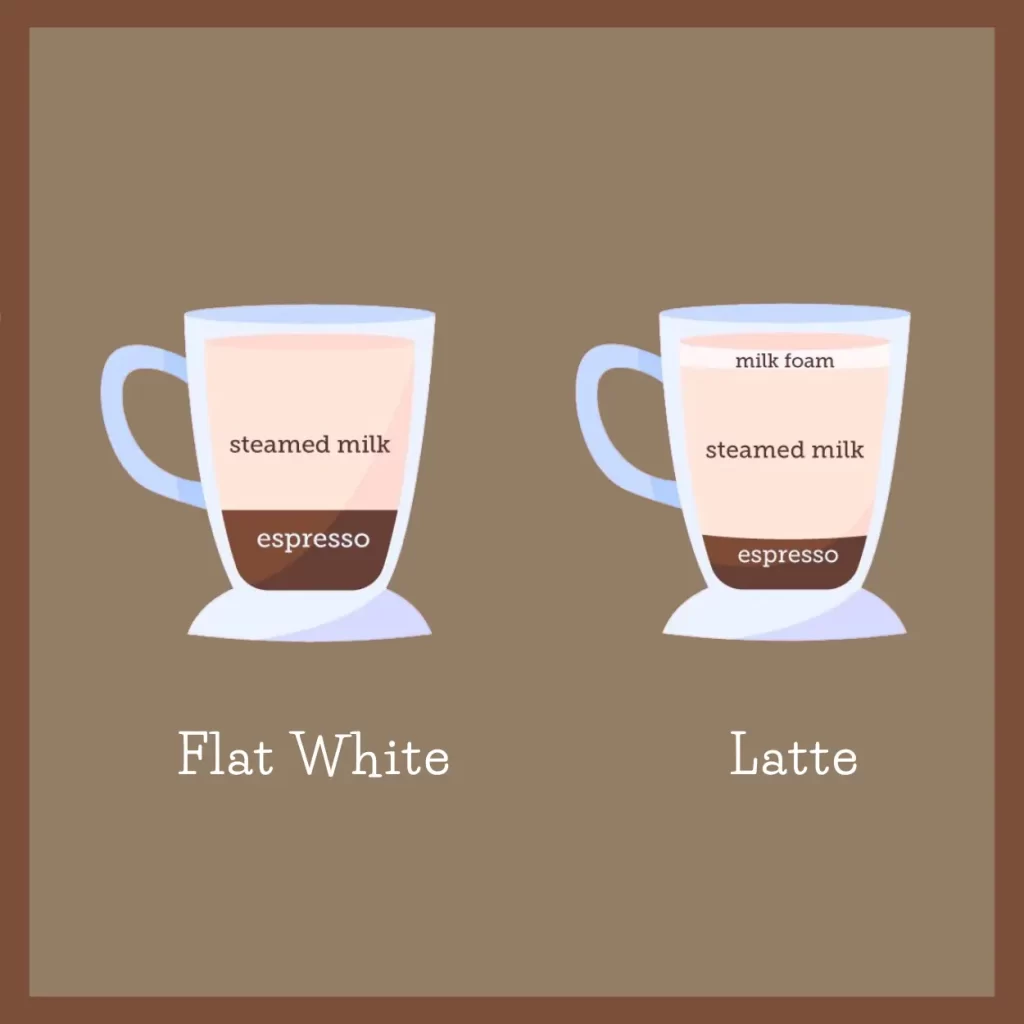
Both flat white and latte epitomize the art of combining espresso and milk, yet they possess nuanced differences that discerning palates can appreciate.
Differences:
- Milk-to-Coffee Ratio:
- Flat White: Characterized by a higher coffee-to-milk ratio, allowing espresso flavors to shine while still maintaining milk’s smoothness.
- Latte: Features a larger volume of milk, resulting in a creamier and milder coffee experience.
- Microfoam Consistency:
- Flat White: Microfoam is velvety and fine, blending seamlessly with espresso for a unified taste.
- Latte: Typically has a thicker layer of microfoam, creating a distinct separation between the espresso and milk.
- Flavor Balance:
- Flat White: Strikes a delicate balance between espresso’s robustness and milk’s sweetness.
- Latte: Emphasizes milk’s creaminess, with espresso providing a backdrop of flavor.
While both drinks offer a delightful coffee-milk fusion, the flat white’s focus on preserving espresso’s dominance and a smoother texture sets it apart from the latte’s creamier profile.
Flat White vs Cappuccino
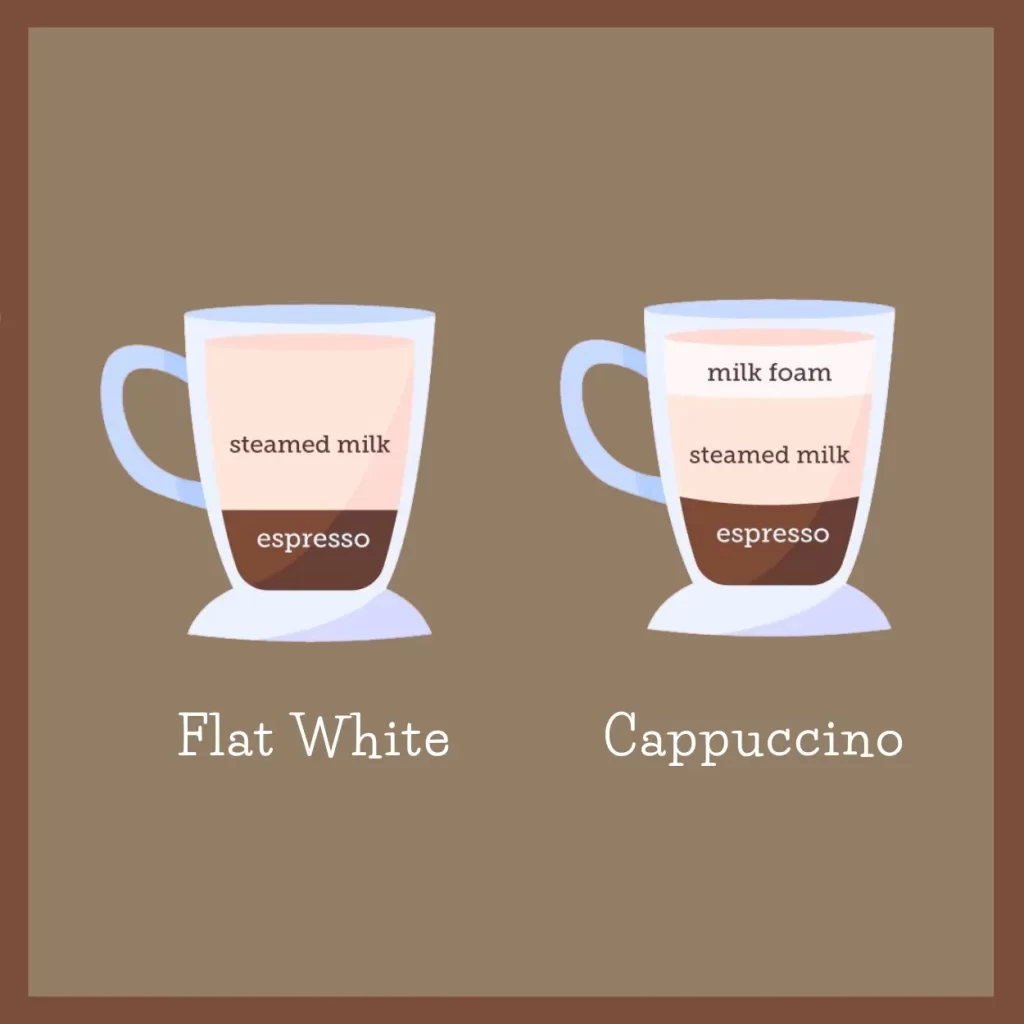
The flat white and cappuccino are revered for their indulgent combination of coffee and frothy milk, yet they exhibit marked variations that cater to distinct taste preferences.
Differences:
- Milk-to-Coffee Ratio:
- Flat White: Emphasizes a higher proportion of coffee to milk, showcasing espresso’s bold flavors.
- Cappuccino: Features an equal balance of coffee, milk, and foam layers.
- Foam Consistency:
- Flat White: Microfoam is velvety and integrated with espresso, offering a consistent taste throughout.
- Cappuccino: Presents a thick layer of dry foam on top, creating a textural contrast with the espresso beneath.
- Presentation:
- Flat White: Often served in a ceramic cup, with minimal visible foam.
- Cappuccino: Presented in a smaller cup, displaying distinct layers of foam, espresso, and milk.
While both beverages celebrate the art of milk frothing, the flat white’s emphasis on espresso dominance and velvety texture distinguishes it from the cappuccino’s foam-centric presentation.
Flat White vs Cortado

The flat white and cortado are subtle coffee drinks that cater to those who appreciate a balance between espresso’s robustness and milk’s creaminess.
Differences:
- Milk-to-Coffee Ratio:
- Flat White: Offers a higher coffee-to-milk ratio, allowing the espresso’s flavor to shine.
- Cortado: Presents a near-equal proportion of espresso and milk, maintaining a balance between the two components.
- Milk Texture:
- Flat White: Features velvety microfoam that integrates seamlessly with espresso.
- Cortado: Showcases steamed milk without excessive foam, ensuring a direct interplay between milk and coffee.
- Origin and Presentation:
- Flat White: Originated in Australia or New Zealand, and is often presented with an emphasis on espresso flavor.
- Cortado: Hails from Spain, where the name translates to “cut,” indicating the drink’s equal parts espresso and milk.
While both beverages share a commitment to achieving balance, the flat white’s espresso dominance and microfoam texture set it apart from the cortado’s direct intermingling of milk and coffee.
Flat White vs Macchiato
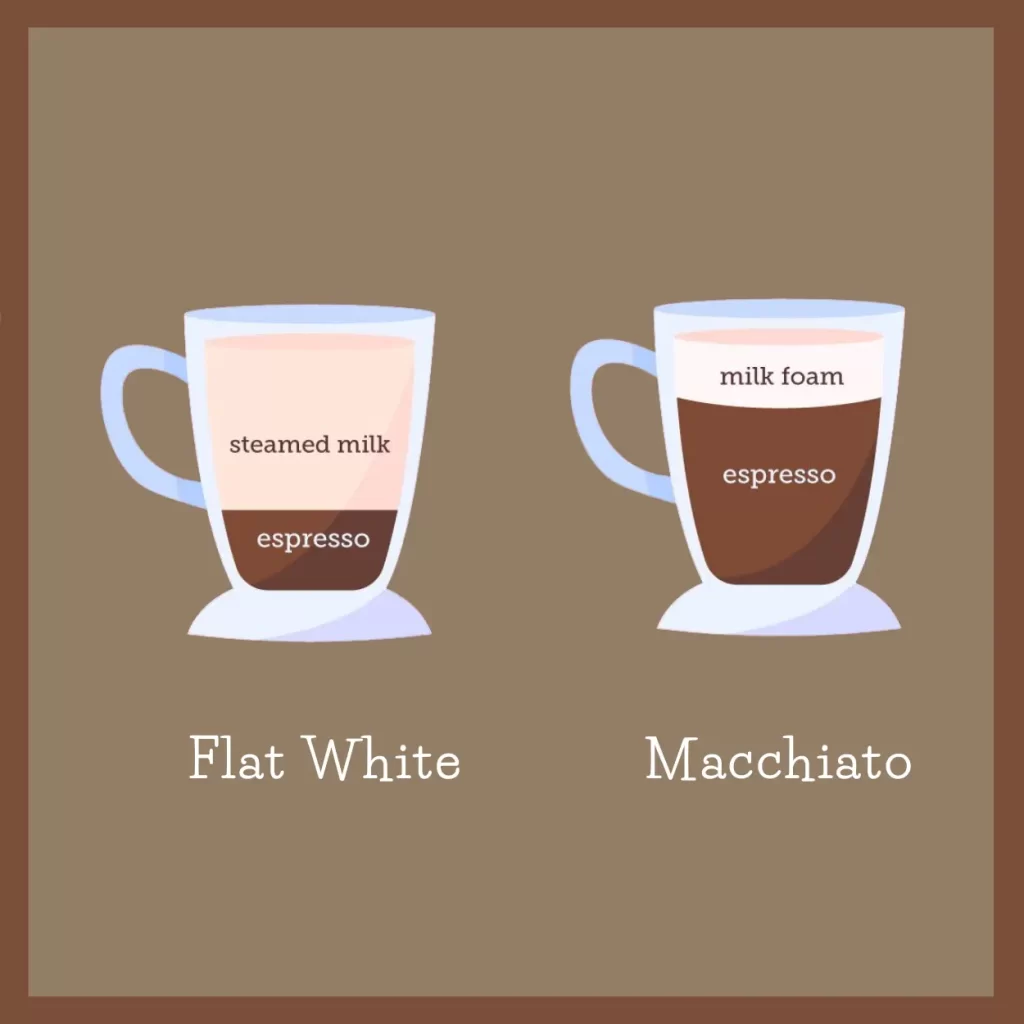
The flat white and macchiato showcase the art of espresso modification with a touch of milk, yielding distinct experiences for those with refined coffee palates.
Differences:
- Milk Modification:
- Flat White: Incorporates steamed milk with velvety microfoam, providing a harmonious blend with espresso.
- Macchiato: Features a simple addition of a small amount of milk or milk foam, creating a bolder espresso taste.
- Flavor Intensity:
- Flat White: Balances espresso’s boldness with milk’s creaminess, resulting in a nuanced flavor profile.
- Macchiato: Emphasizes the pure taste of espresso, with milk serving as a subtle enhancement.
- Presentation:
- Flat White: Often presented in a ceramic cup, focusing on the interplay between milk and coffee.
- Macchiato: Presented in a demitasse cup, showcasing espresso with a hint of milk on top.
While both drinks explore the art of espresso modification, the flat white’s dedication to balance and texture distinguishes it from the macchiato’s espresso-centric approach.
This delectable coffee drink, as a coffee masterpiece, showcases its unique attributes through thoughtful comparison with other beloved coffee drinks. By understanding the nuances that set it apart from the latte, cappuccino, cortado, and macchiato, you gain insight into the world of coffee flavors and textures, allowing you to savor each drink with an enhanced appreciation for its distinct characteristics.
Expert Tips and Tricks for Home Brewers
Mastering the art of crafting a delicious cup of this delectable coffee drink at home requires a combination of skill, knowledge, and attention to detail. Elevate your brewing game with these expert tips and tricks that will ensure your experience is nothing short of exceptional.
Perfecting the Water Temperature
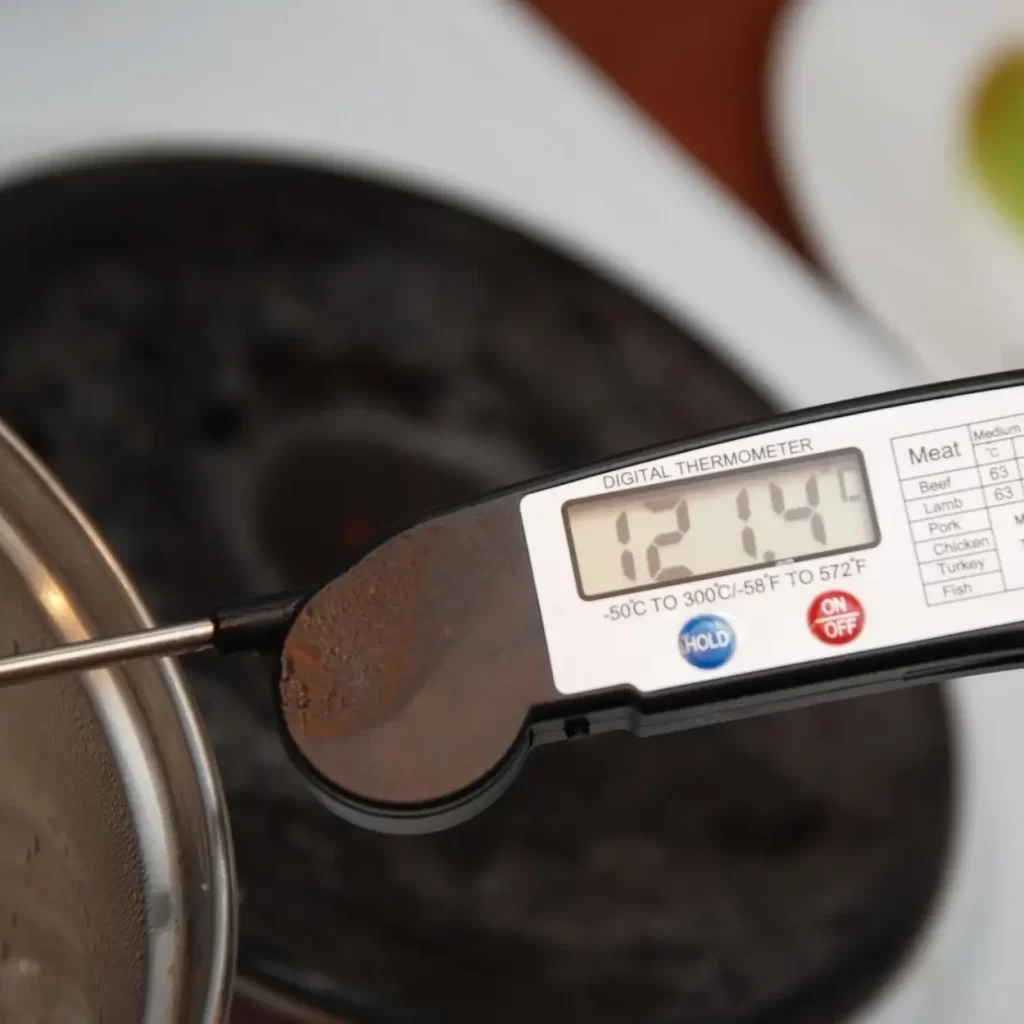
The water temperature plays a crucial role in extracting the nuanced flavors of your coffee beans and achieving optimal results in your preparation. Here’s how you can ensure you’re getting the water temperature just right:
- Invest in a Thermometer: To maintain consistency, use a thermometer to measure the water temperature. The ideal water temperature for brewing coffee, including the espresso for your coffee drink, is around 195°F to 205°F (90°C to 96°C).
- Preheat Your Equipment: Ensure that your espresso machine, portafilter, and cups are properly preheated. This prevents the water from losing heat as it passes through, resulting in a more accurate extraction.
- Temperature Surfing: If your espresso machine allows for temperature adjustment, experiment with different temperatures to find the sweet spot that highlights the flavors of your chosen coffee beans.
By paying close attention to water temperature, you’re setting the stage for a well-balanced and flavorful cup of this coffee drink.
Calibrating Your Coffee Grinder
Consistency in grind size is key to achieving a uniform extraction and, consequently, a well-balanced cup of this lovely beverage. Here’s how to calibrate your coffee grinder for the best results:
- Understand Grind Consistency: Different brewing methods require specific grind sizes. For this drink, a fine to medium grind is ideal, promoting optimal extraction and flavor balance.
- Regular Cleaning: Keep your coffee grinder clean to prevent buildup that can affect the grind consistency. Regular maintenance ensures your grinder functions as intended.
- Trial and Error: Experiment with different grind sizes to find what works best for your beans and equipment. Fine-tune the grind until you achieve the desired espresso extraction time.
A well-calibrated grinder contributes to a consistent extraction, resulting in a cup of joe that’s full of flavor and aroma.
Enhancing Flavors with Special Ingredients
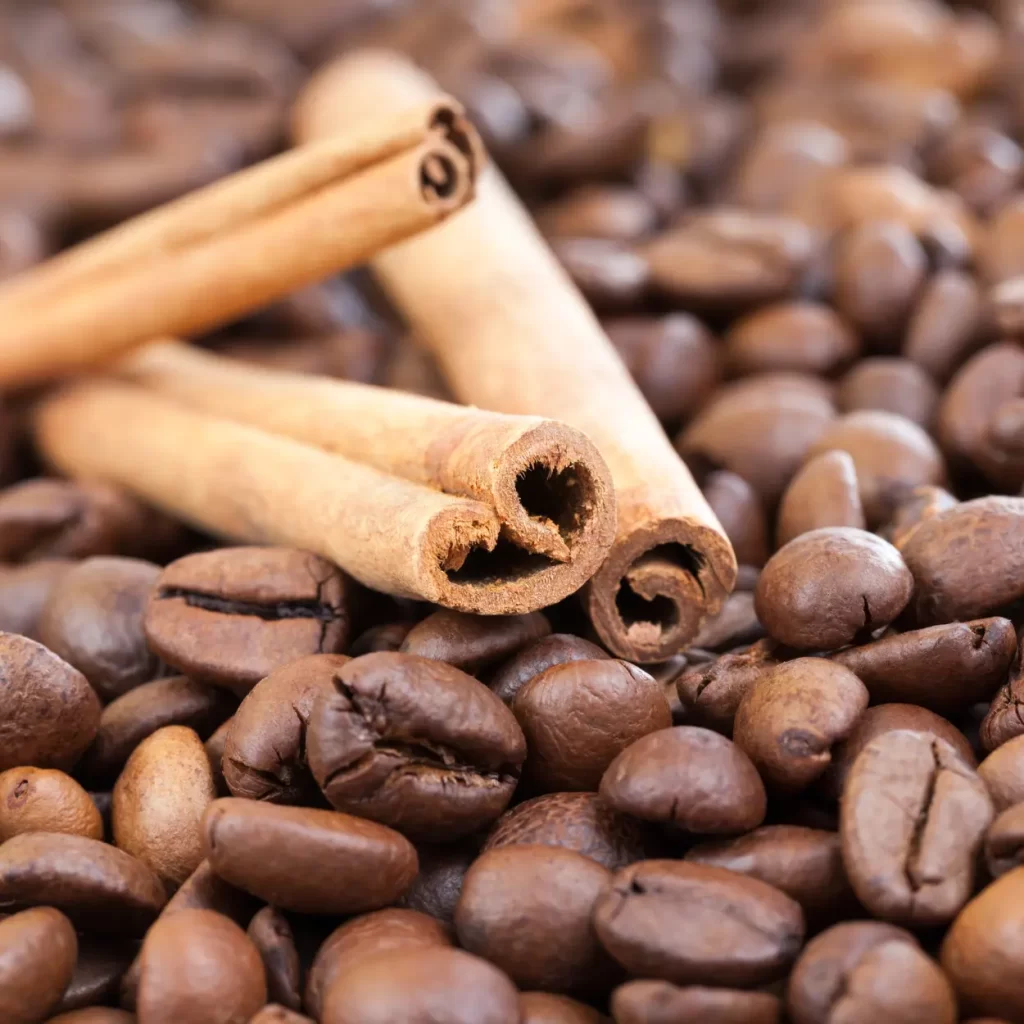
Elevate your experience by exploring special ingredients that can add depth and uniqueness to your brew. Here are some creative options to consider:
- Spices and Flavorings: Experiment with adding a pinch of spices like cinnamon or nutmeg to the coffee grounds before brewing. Alternatively, try a drop of vanilla extract or a sprinkle of cocoa powder on the milk foam.
- Sweet Syrups: Infuse your beverage with a touch of sweetness by incorporating flavored syrups. Choices like caramel, hazelnut, or vanilla can complement the coffee’s profile.
- Alternative Milks: For a twist, substitute traditional dairy milk with plant-based alternatives like almond, oat, or coconut milk. These options can introduce unique flavors and textures to your cup of joe.
Special ingredients offer a realm of possibilities to personalize your coffee drink, turning it into a delightful canvas for your creativity.
By perfecting water temperature, calibrating your grinder, and exploring special ingredients, you’re equipped with the insights and techniques needed to craft an outstanding coffee in the comfort of your home. Embrace the journey of experimentation and refinement, and soon you’ll be enjoying a barista-level cup of this delectable beverage that showcases your passion for the art of coffee.
Conclusion
In the realm of coffee, this lovely beverage stands as a testament to the delicate art of balance and harmony. Originating from the passionate coffee cultures of Australia and New Zealand, this beverage has journeyed through time, capturing the hearts of enthusiasts around the globe. As we explored the origins and tastes that define this concoction, we uncovered the unique attributes that set it apart from its counterparts like latte and cappuccino.
A flat white is not just a drink; it’s a symphony of flavors and textures meticulously orchestrated to offer an exquisite coffee experience. The delicate dance between rich espresso and velvety microfoam creates a cup that celebrates the purity of coffee while embracing the art of milk frothing. Whether enjoyed in a bustling café or brewed to perfection at home, this drink resonates with those who seek a nuanced and refined coffee encounter.
In this exploration of what defines this drink– from its birthplace to its role in modern coffee culture, its preparation techniques to its variations – we’ve not only deepened our understanding of this beloved beverage but also enriched our appreciation for the artistry that goes into crafting the perfect cup. Whether relishing this drink’s velvety embrace, marveling at its intricate latte art, or savoring its nuanced flavors, one thing is clear: this coffee drink is a masterpiece that continues to captivate the hearts and palates of coffee enthusiasts worldwide.
FAQ
How much caffeine is in a flat white compared to other coffee drinks?
This drink generally contains a similar amount of caffeine as other espresso-based drinks, like lattes and cappuccinos, due to the shared espresso base.
Why is it called "flat" white?
The name "flat white" refers to the smooth, velvety microfoam on top of the espresso, as opposed to the thicker foam layer in other drinks like cappuccino.
What milk is best for a flat white?
Whole milk or a creamy plant-based alternative, like oat or almond milk, is commonly used for this beverage to achieve the desired creamy texture and flavor balance.
Can I make a flat white without a coffee machine?
Yes, you can still make this beverage at home using an alternative milk frother or a handheld NanoFoamer, coupled with a stovetop espresso maker or strong brewed coffee.
